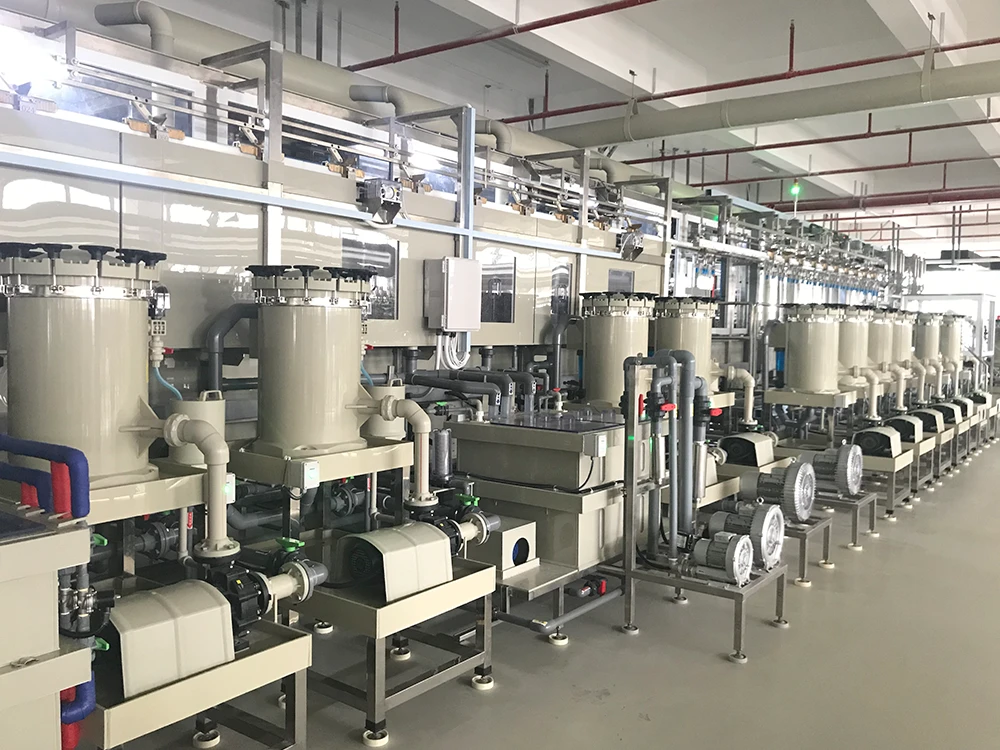
# Electroplating Filter: Enhancing Efficiency and Purity in Metal Deposition Processes
Electroplating is a critical process in various industries, from automotive to electronics, where metal deposition is essential for creating durable, conductive, and aesthetically pleasing surfaces. However, the quality of the electroplating process heavily depends on the purity of the plating solution. This is where electroplating filters come into play, ensuring that the solution remains free from contaminants that could compromise the final product.
## The Role of Electroplating Filters
Electroplating filters are designed to remove impurities from the plating solution, such as particulate matter, oils, and other contaminants. These impurities can originate from various sources, including the raw materials used in the plating process, the environment, or even the equipment itself. If left unchecked, these contaminants can lead to defects in the plated surface, such as pits, roughness, or uneven coating thickness.
By incorporating an electroplating filter into the system, manufacturers can significantly enhance the efficiency and purity of the metal deposition process. The filter works by continuously circulating the plating solution through a filtration medium, which captures and removes contaminants. This not only improves the quality of the plated product but also extends the life of the plating solution, reducing the need for frequent replacements and lowering overall operational costs.
## Types of Electroplating Filters
There are several types of electroplating filters available, each suited to different applications and levels of filtration. Some of the most common types include:
– Cartridge Filters: These filters use replaceable cartridges made from various materials, such as cellulose, polypropylene, or activated carbon. They are effective at removing fine particulate matter and are easy to maintain.
– Bag Filters: Bag filters are designed to handle larger volumes of plating solution and are typically used in high-flow applications. They are available in different micron ratings to capture various sizes of contaminants.
– Depth Filters: Depth filters use a thick filtration medium to trap contaminants throughout the entire depth of the filter. They are particularly effective at removing oils and other organic impurities.
– Membrane Filters: Membrane filters offer the highest level of filtration, capable of removing sub-micron particles. They are often used in applications where ultra-pure plating solutions are required.
## Benefits of Using Electroplating Filters
The use of electroplating filters offers numerous benefits, including:
– Improved Product Quality: By removing contaminants, filters ensure a smoother, more uniform metal deposition, resulting in higher-quality finished products.
– Extended Solution Life: Clean plating solutions last longer, reducing the frequency of solution changes and associated costs.
– Reduced Downtime: Filters help maintain consistent plating conditions, minimizing the need for process interruptions due to contamination issues.
– Environmental Benefits: By reducing the amount of waste generated from contaminated plating solutions, filters contribute to more sustainable manufacturing practices.
## Conclusion
Electroplating filters are an indispensable component of the metal deposition process, playing a crucial role in enhancing efficiency and purity. By selecting the appropriate filter type and maintaining it properly, manufacturers can achieve superior plating results, reduce operational costs, and contribute to a more sustainable production environment. As industries continue to demand higher standards of quality and performance, the importance of electroplating filters will only continue to grow.
Keyword: electroplating filter
